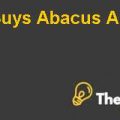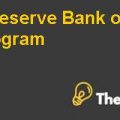Berkshire Partners: Bidding For William Carter’s Case Study Solution
Berkshire a Boston based private equity firm is one of the biggest and successful investment company in the world and is considering onacquiring another pioneer in its respective field, which is William Carter Company. William Carter Company is operating in the young children clothing manufacturing. William Carter was formed in the year 1865. The company was generating a very handsome amount of profits since its formation however, the performance of William starts to deteriorate in the late 1980s. In the year 1992, the management was changed and new team of management is appointed.
The new management team was very enthusiastic and keen to expand and grow the operations of the company and they make several profitable strategies which plays an important role in the turnaround of the performance. The most prominent strategy was to relocate the production plant to Mexico and other Central American countries where the production costs are very low. These favorable factors have made William Carter an attractive target for the acquisition.
The current shareholders of William Carter are also considering to divest from the company in order to gain significant premium on their investments. Berkshire is also interested in acquiring William Carter and for this purpose they have identify the potential financing package. But the staple-on financing package suggested by Goldman Sachs appears to be expensive and Berkshire should have to finance the acquisition from alternative financing package.
Total Value of William Carter Company:
The total value of the William Carter Company appears to be approximately $406 million and the equity of William Carter Company is approximately $231 million. The enterprise and equity value of Berkshire is computed on the basis of discounted cash flow model, in order to compute the enterprise value of William Carter Company several assumptions which are provided by the management have been used. It can be said that the assumptions and financial projections seems to be reasonable, the detailed analysis of these assumptions and financial projections are as follows:
Sales will grow at a good rate for the next six years especially in the year 2002; the growth in sales would be largest. After the year 2002, the growth in sales would be start to decline. The sales have been growing in the past, which further enhances the reasonableness and authentication of the assumptions. The sales growth will be minimal for the year 2006, this also depicts the un-biasness and independence of management.
William Carter Company is planning to relocate the production plant to another country where the production costs which mainly includes direct labor and direct overhead costs are minimal, this might be the main reason for healthy growth in the gross profit margin. It can be said that the company will achieve significant economies of scale by shifting the production plant to countries where the direct costs are minimal.
The relocation of the production plant doesn’t only affect the gross profit margins but it will also affect the EBIT and EBITDA favorably as well. William Carter can save significant amount of indirect overheads as well as factory overheads, rentals and transportation cost. Furthermore, the double tax treaty agreement is also exist between the two countries i.e. the home country of William Carter and the country in which they are planning to relocate which will also reduce the tax expenditure to some extent.
On the other hand, William Carter Company will have to invest substantially in the capital equipment because of the anticipated relocations and expansion which are the main reason for the increased capital expenditure. Same is the case for working capital, the management will have to invest more working capital if they have to expand the operations of the company.
Cost of Capital:
Weighted average cost of capital is the minimum return which the investors requires from their investment in the company. The WACC of William Carter Company is almost 9.21%, William Carter Company has raised finance from three sources which are ordinary shares, preference shares and debt. Therefore, the cost of capital is also comprisedof three components cost of equity, cost of preference shares and cost of debt. All these costs have been added after multiplying with their sums in order to calculate the weighted average cost of capital of William Carter Company. There are many factors and figures which are assumed in calculating the cost of capital of William Carter Company which are as follows:
- Market risk premium is assumed to be 7%.
- The equity beta of William Carter Company is calculated by taking the average equity beta of all of the top four rivals of William.
- The credit rating of the William Carter is assumed to be AAA- and the prevailing credit spread is assumed to be 6%.
- The annual dividend on the preference shares is assumed to be 10%.
- The tax rate is assumed to be 30%.....................
This is just a sample partial case solution. Please place the order on the website to order your own originally done case solution.









